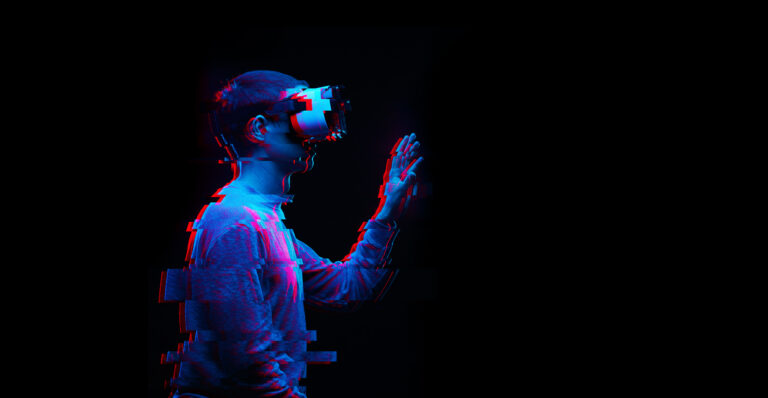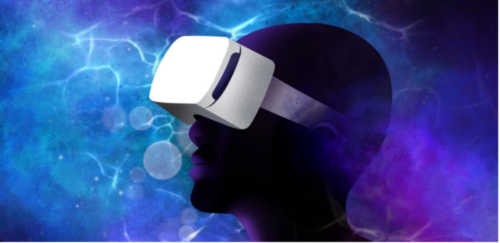VR - hype, fantasy or the future of training?
“You vill never learn German if you don’t TALK to us!” yelled my exasperated exchange host as I cowered, aged 14, in his Bavarian home, desperate to talk but terrified of making a daft mistake! Of course, he was right.
I was desperate to speak fluent German but the thought of making a fool of myself really did cripple me. If only, back then, there had been some kind of program that could have given me the opportunity to practise the language in an interactive way but without embarrassing myself in front of real humans!
Almost 40 years on, are we on the brink of what was then inconceivable? With a current value of ca. $8bn, some forecasters put a $35bn value on the global metaverse training market by 2025. Others report dwindling interest in ‘a passé buzz word’.
The pandemic put a stop to travel enhancing our language acquisition. But, this in turn, gave tail wind to the language buffs behind VR metaverse language apps including Mondly, ImmerseMe and Immerse.
PWC research indicates those undergoing VR training in the metaverse are 275% more confident in applying knowledge acquired. But is this really true for language learners? I thought I’d better put VR language learning in the virtual metaverse to the test – if nothing else to see if I’ll be out of a job soon!
Did I make it out alive from Mondly's VR language training universe?
OK, so… I’m sitting in my virtual restaurant enjoying some live Muzak played by a very smooth pianist, surrounded by a few desperate-looking lone diners. Suddenly, my German avatar waitress approaches. As she clicks her heels, beads of sweat start to run down my virtual forehead.

She asks me what I want to drink and I reply in German ‘I’d like a glass of orange juice please’. Blank face. She tells me she doesn’t understand me (is my Bavarian accent still that bad?!) and just keeps blinking at me. I try a few other options until ‘beer’ seems to be an acceptable drink. She smiles, turns around and goes off to pour one.
While there are clearly still limits to VR (voice recognition) tech as well as having to communicate within pre-programmed Q&A parameters, it’s not all bad. Mondly’s app is intuitive, parachutes you into real-life scenarios, gives feedback on pronunciation and caters for different levels in 30 languages. It also offers a daily lesson to build up vocab and sentences in thematic blocks – even if my somewhat wooden animated trainer was slightly reminiscent of Thunderbirds’ Tintin.
What is the best VR learning app in the metaverse?
Of the few current products on the VR/AR market, for me, Mondly stands out as the most advanced, accessible, wide-ranging and user-friendly. BUT, if you go off their pre-programmed script or use correct language that isn’t recognised by the AI you simply get stuck. Your receptionist blinks blankly at you and shrugs her shoulders. Your taxi driver stops dead and you’re simply not getting to the airport on time. I had similar gripes with New Zealand-based ImmerseMe – despite their helpful academic team who are proactive in helping with issues.
Most of all, neither offers human input. Unlike Immerse (currently only in Spanish), they don’t offer virtual classes with real humans behind them, offering feedback and correction. Immerse is still in its infancy but offers much more promise and sophistication with virtual classrooms and social interaction with classmates thrown in.
This is my top choice for L&D professionals to keep an eye on as it can bring together colleagues from different departments and countries into a virtual classroom, with more languages to be added soon. My main issue with Immerse, however, is that everyone appears legless… and not because of an overindulgence in gin!
So, what’s the upshot?
The top 4 things you will get from VR language learning
1. Immersive experience: you can interact in real-life scenarios and build confidence with native speakers.
2. Accessibility: the metaverse is accessible from anywhere. You can boost your language at your own pace, in your own time, from wherever suits.
3. Interactive learning: VR offers role-playing games, simulations and virtual tours to keep learning fun and engaging.
4. Good for basics: at an elementary level you should make progress but in its current state, you are unlikely to progress much beyond the basics.
What 4 things do you need to be wary of?
1. Limited feedback: blank looks from avatar waiters won’t help you understand why they aren’t responding. Your mistakes won’t be corrected.
2. No communicating off-piste: it will teach you set sentences and responses but won’t prepare you for any deviations from what you’ve learned.
3. Technical expense: you’ll need a VR headset. A big investment for an L&D manager looking for a company-wide training solution.
4. Tolerating the unreal real: undoubtedly the somewhat clunky visuals will become more sophisticated but current offerings still have some way to go. At the very least, avatars need to have legs!
Who should be considering the VR language leap?
All in all, if you’re looking to learn a language from scratch or at a basic level, I think it’s definitely worth exploring, bearing the limitations in mind. For quicker and deeper progress, I’d recommended a blended learning approach, combining virtual learning with a human trainer who will help you come unstuck if you end up banging your head against a virtual wall. The added bonus is that your trainer is likely to have legs!
Cathy Branson
Business Development and Marketing Director
& German/Russian/English Language Trainer
Feel free to give me a call on +44 (0) 1865 596980 if you’d like to discuss.

